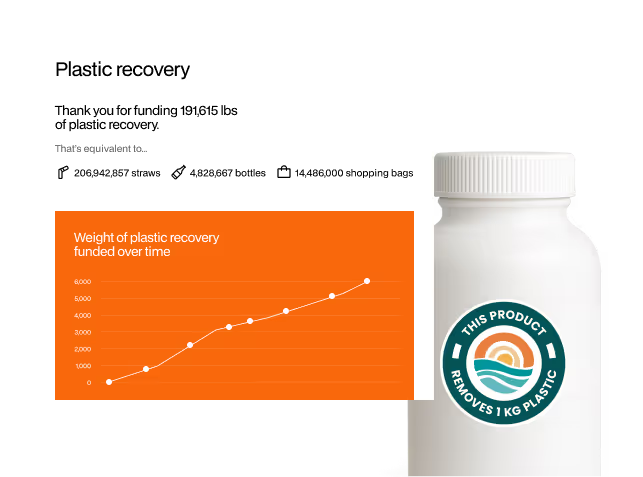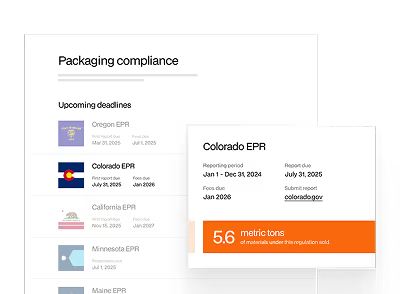Artificial intelligence (AI) is no longer confined to abstract experiments or futuristic visions. In the world of waste management and sustainability, it is emerging as a critical enabler of safety, compliance, and circularity.
From protecting vulnerable waste workers in hazardous dumpsites to giving multinational brands the ability to forecast compliance costs under expanding EPR laws, AI is beginning to reshape how plastic waste is managed and reported.
But it is not a silver bullet. Like any tool, AI is only as good as the systems it supports. The opportunity lies in integrating AI into recovery, reporting, and packaging systems to make them safer, smarter, and more transparent.
Why AI in Waste Management Matters
The stakes are deeply human:
- Tens of millions of people work in landfills and dumpsites globally.
- The sector has among the highest rates of child labor and bonded labor, with little social protection.
- In some unregulated dumpsites, life expectancy falls below 40 years due to daily exposure to toxins and physical hazards.
AI offers a pathway to reduce these risks. Hardware-enabled by AI — from sorting robots to gas detection sensors — can reduce human exposure to hazardous materials. Predictive systems can flag unstable landfill slopes or methane build-ups before tragedy strikes.
For rePurpose Global, this human-first lens is essential: AI should make waste management not only more efficient, but more dignified and safe.
What AI Can Really Do in Recycling
Practical applications of AI in recycling are already here:
- Sorting plastics with computer vision and spectroscopy: Accuracy rates now exceed 95%, allowing plants to separate PET, HDPE, LDPE, and multilayer films more effectively.
- Smart bins and sensor networks: Bins embedded with cameras and weight sensors guide consumers on disposal and alert operators when to collect, reducing trips by 30–35%.
- Fleet and logistics optimization: AI-driven route planning reduces fuel use by up to 20% and mileage by 30%.
- Material passports and traceability: Each batch of plastic can be digitally tracked, creating transparency across the value chain and preventing leakage or double counting.
Example: Intuitive AI’s Oscar Sort system improves consumer recycling accuracy by up to 96%. Similarly, rePurpose Global is piloting AI-enabled material tracking across its impact projects, ensuring every kilogram of plastic can be audited from collection to final destination.
AI for Tracking, Reporting, and Compliance
AI is not just transforming physical recycling — it is changing how companies measure, forecast, and disclose their plastic footprints.
At rePurpose Global, our platform integrates AI into packaging measurement and compliance workflows, helping brands:
- Translate packaging data into compliance requirements under Extended Producer Responsibility (EPR) schemes and recycled content mandates.
- Forecast regulatory exposure by modeling how today’s packaging choices will affect future liabilities.
- Recommend packaging interventions based on analysis of hundreds of thousands of anonymized SKU-level data points, highlighting cost-saving and compliance-improving material shifts.
This is critical because brand packaging decisions are often idiosyncratic, while downstream infrastructure is shared. AI bridges the gap, aligning design decisions with real-world waste system capacity.
The Business Case for AI in Waste and Reporting
AI adoption in waste systems is not just about innovation — it is about compliance, cost control, and competitive advantage.
1. Regulatory & Compliance Advantage
- EPR is globalizing: Over 400 EPR policies exist across 60+ countries (OECD, 2024). By 2030, the compliance market is projected to grow at 7–8% CAGR.
- Penalties are real: In Germany, non-compliance with packaging EPR can trigger sales bans. In Canada, some provinces already shift 100% of recycling costs onto producers.
- AI-enabled platforms help companies avoid fines by translating complex packaging portfolios into clear compliance reports and financial forecasts.
2. Cost Reduction & Efficiency Gains
- Sorting plants using AI reduce contamination rates by 25–30%, lowering downstream processing costs.
- Fleet optimization saves up to 20% in fuel and cuts emissions by 25–35%.
- Smart bin pilots have delivered 13–15% cost savings across collection systems.
3. Investor and Stakeholder Confidence
- 89% of institutional investors demand ESG data measured against consistent standards (EY, 2023).
- AI-enabled reporting systems generate audited, anomaly-checked datasets that strengthen CSRD, SEC, and ISSB disclosures.
- Stronger data builds investor trust, reduces reputational risk, and differentiates brands in sustainability indices.
Challenges and Safeguards for AI in Waste Management
While AI offers enormous potential, its deployment in waste management faces scientific, technical, and socio-economic hurdles that must be addressed to ensure integrity and long-term viability.
- Data Quality and Bias
- AI models require large, high-quality datasets to classify materials accurately. However, waste streams are highly heterogeneous, varying by region, season, and socio-economic context.
- Most computer vision models are trained on clean, curated samples, but real-world waste is dirty, overlapping, and damaged, leading to error rates much higher than lab results suggest.
- Bias in training data may privilege “Western” waste profiles, underperforming in the Global South where informal waste dominates.
- AI models require large, high-quality datasets to classify materials accurately. However, waste streams are highly heterogeneous, varying by region, season, and socio-economic context.
- Spectral and Sensor Limitations
- Near-infrared (NIR) spectroscopy, commonly used for polymer identification, struggles to distinguish black plastics, multilayer films, and heavily contaminated items.
- AI may misclassify these materials, creating “false positives” that undermine recycling yield.
- High-resolution hyperspectral systems can overcome this but remain costly and power-intensive.
- Near-infrared (NIR) spectroscopy, commonly used for polymer identification, struggles to distinguish black plastics, multilayer films, and heavily contaminated items.
- Integration and Scalability
- Most AI pilots operate in controlled facilities; scaling them to municipal or informal-sector systems is non-trivial.
- Harsh environments (dust, humidity, heat) degrade sensors quickly, leading to data loss and system downtime.
- Without robust maintenance protocols, AI hardware risks becoming stranded assets in underfunded municipalities.
- Most AI pilots operate in controlled facilities; scaling them to municipal or informal-sector systems is non-trivial.
- Labor and Social Risks
- Automation of sorting tasks may displace waste workers, who make up an estimated 15–20 million people globally. Unless paired with formalization programs, AI could deepen inequalities, removing livelihoods without providing alternatives.
- Ethical deployment requires hybrid models where AI augments worker safety (e.g., pre-sorting hazardous waste).
- Automation of sorting tasks may displace waste workers, who make up an estimated 15–20 million people globally. Unless paired with formalization programs, AI could deepen inequalities, removing livelihoods without providing alternatives.
- Energy and Environmental Trade-offs
- AI systems, particularly deep learning and hyperspectral imaging, are computationally intensive.
- Training models and running inference at scale can create non-trivial energy footprints, which must be considered in life-cycle assessments.
- If powered by fossil-based grids, the carbon costs could partially negate the environmental benefits of improved recycling.
- AI systems, particularly deep learning and hyperspectral imaging, are computationally intensive.
How Companies Can Get Started
- Identify bottlenecks: Where are reporting errors, contamination, or inefficiencies?
- Run pilots: Test AI in a single facility, geography, or reporting process.
- Layer human oversight: Ensure traceability and labor safeguards remain central.
- Scale responsibly: Invest in systems that improve worker safety, feedstock security, and reporting quality.
FAQs on AI and Waste Management
What is AI used for in recycling?
AI is applied across multiple stages of the recycling chain. Computer vision and spectroscopy identify polymer types with accuracy rates often above 95% in controlled trials, though real-world performance is lower due to contamination. Machine learning models optimize sorting, route logistics, and contamination detection, while emerging “digital material passports” provide end-to-end traceability of recovered plastics.
How does AI improve waste reporting?
AI automates the collection of weight, composition, and contamination data from sensors and field devices, reducing reliance on manual spreadsheets. Algorithms detect anomalies (e.g., suspiciously uniform weights) and generate audit-ready outputs aligned with frameworks like the CSRD, SEC climate rules, and ISSB standards. This creates higher-quality, verifiable ESG data.
Can small companies adopt AI?
Not every company needs to invest in robotics or hyperspectral scanners to benefit from AI. rePurpose Global’s platform allows brands — including over 400 small and mid-sized businesses — to leverage AI for packaging data translation, EPR compliance, and footprint reporting without major infrastructure costs. The software ingests packaging SKUs, runs them through AI-enabled compliance models, and outputs forecasts, regulatory obligations, and even packaging change recommendations. This makes advanced analytics and audit-ready reporting accessible to companies of all sizes.
Is AI too expensive for developing regions?
Hardware costs are significant: hyperspectral sorters can cost upwards of $250,000 per line, with additional power and maintenance requirements. However, pairing AI with recovery financing (like Verified Plastic Recovery Units) can subsidize deployment in high-leakage geographies, effectively leapfrogging traditional infrastructure gaps.
Can AI reduce waste, or just track it?
Both. Predictive analytics can identify materials most likely to leak from collection systems, informing design-for-recyclability decisions. At the same time, AI-enabled smart bins and route optimizers reduce operational inefficiencies.
What role does rePurpose play in AI + waste management?
rePurpose integrates AI into its packaging compliance and recovery platform, translating brand packaging data into EPR reports, forecasting cost exposures, and suggesting packaging changes to reduce regulatory risk. Across its impact projects, rePurpose pilots AI for traceable collection data and audited reporting, ensuring that technology improves both environmental integrity and worker safety.
Smarter Systems, Not Silver Bullets
AI is not a cure-all for plastic pollution. But when integrated with recovery financing and compliance systems, it becomes a force multiplier — making waste management safer, recycling more efficient, and sustainability reporting more credible.
At rePurpose, the focus is not just on deploying AI, but on translating data into action: from EPR compliance and cost forecasting to packaging recommendations and verified recovery.
Because in the end, the circular economy is not only about materials — it is about building systems that are resilient, transparent, and just. AI, done responsibly, can help us get there.

.png)
.png)
.avif)
.avif)







